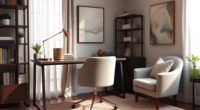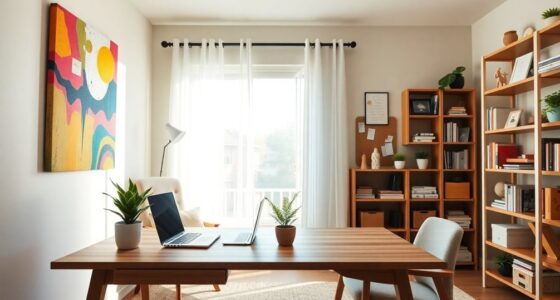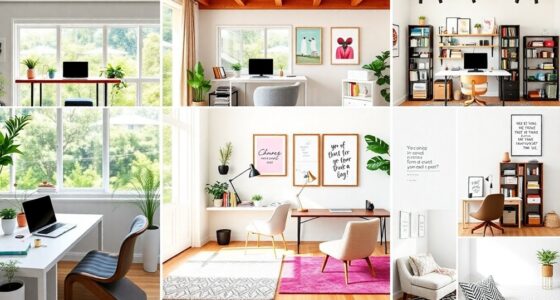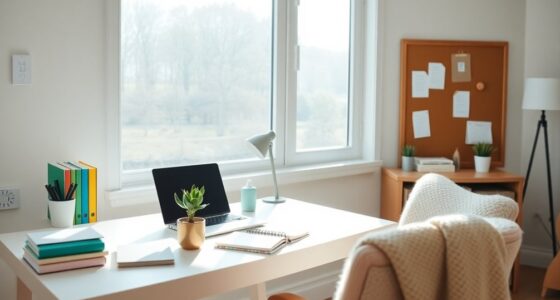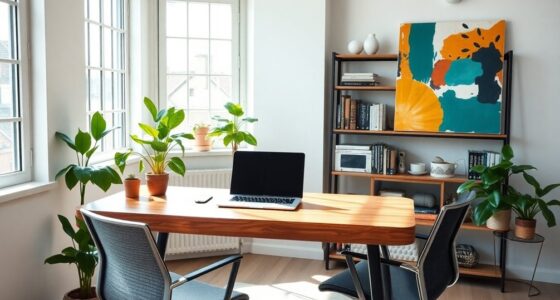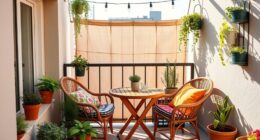Creating inspiring libraries and learning nooks at home boosts your child's creativity and academic success. Incorporate diverse materials like fiction, nonfiction, and visuals to spark their imagination. A flexible design can transform learning into a fun adventure, making it personalized and dynamic. With each book, you're enriching their literacy and numeracy skills. The right environment fosters a love for learning, and there's so much more to explore about building these spaces that inspire growth.
Key Takeaways
- Create a cozy learning nook with diverse books to spark imagination and encourage a love for reading and exploration.
- Incorporate flexible design elements to allow for personalized experiences, making learning a fun adventure.
- Stock your library with a variety of materials, including fiction, nonfiction, and visuals, to keep children engaged and motivated.
- Foster a scholarly culture by including around 500 books, which can significantly enhance children's academic achievement and cognitive skills.
- Participate in community programs offering free books to support literacy development and instill a lifelong reading habit in children.
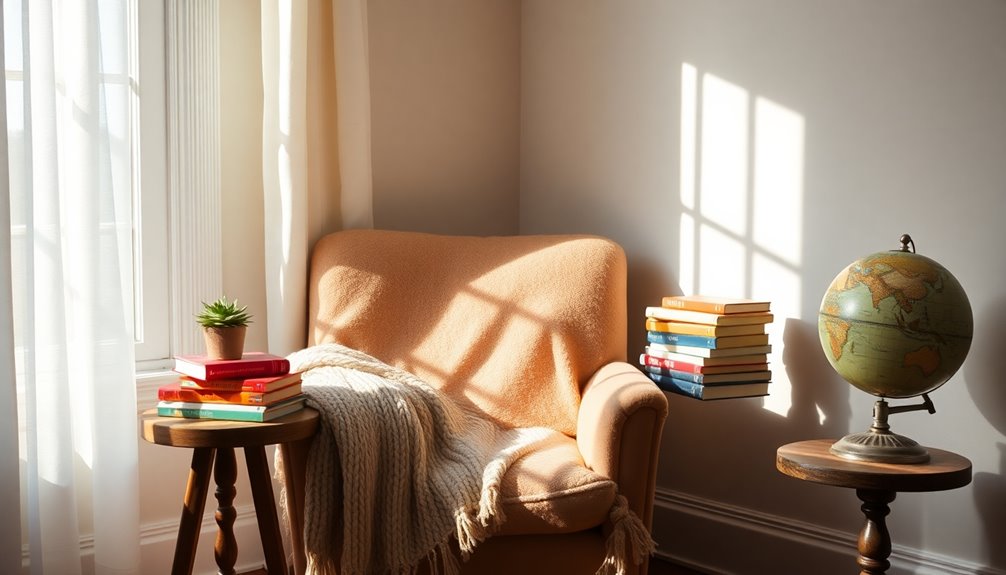
When you create an inspiring library or learning nook at home, you're not just adding bookshelves; you're building a foundation for curiosity and growth. A well-stocked home library can significantly enhance your children's academic achievement and long-term cognitive skills. Studies show that growing up in a home with around 500 books can increase educational attainment by approximately three years compared to homes with fewer books. By providing a rich environment filled with diverse reading materials, you're fostering a scholarly culture that promotes literacy and numeracy.
As you design your learning nook, think about making it engaging and interactive. Incorporating a variety of materials—fiction, nonfiction, poetry, and visuals—can spark your child's imagination and encourage a love for learning. Flexible design elements allow for personalized experiences, which can adapt to your children's evolving interests. A dynamic space encourages active participation and creativity, making learning a fun adventure rather than a chore. Moreover, research indicates that the size of a home library is linked to higher reading, math, and technological skills in adulthood. Additionally, providing enrichment toys alongside books can further enhance your child's cognitive development through sensory exploration.
The benefits of a home library extend beyond just literacy. Children from less-educated families experience an even greater impact, where each additional book plays a crucial role in their development. Literacy rates soar in homes where books are plentiful, and numeracy skills also flourish in such environments. The positive effects of home libraries on literacy are consistent across various cultures, proving that the presence of books can create a lifelong routine of reading and learning.
Don't overlook the importance of diversity in your book selection. Access to a broad range of books keeps your children engaged and motivated to read. When they see themselves represented in the stories they read, they connect more deeply with the content, enhancing their comprehension and enjoyment. Building a diverse home library can help bridge the literacy gap, ensuring that all children, regardless of their background, have equal opportunities to thrive.
Programs that provide free books often lead to significant improvements in reading skills and engagement, showing that every book truly matters.
In short, your efforts in creating an inspiring library or learning nook at home can have a lasting impact on your children's education and personal growth. As you gather books and design your space, remember that you're not just filling shelves; you're nurturing a culture of reading that will inspire creativity and curiosity for generations to come.
Frequently Asked Questions
How Can I Organize My Home Library Efficiently?
To organize your home library efficiently, start by categorizing your books. You can sort them by genre, subject, or even reading status.
Utilize vertical storage to maximize space and consider dedicated areas for specific types of books.
Regularly update your collection by weeding out duplicates and unwanted titles.
Don't forget to create a cozy reading nook where you can enjoy your books, making it a personal and inviting space for you.
What Are the Best Colors for a Creative Learning Nook?
When you're designing a creative learning nook, consider colors that stimulate your mind and boost creativity.
Red and orange can energize the space, making it ideal for collaboration. For a calmer vibe, try blue or green to help you focus.
Combining yellow with blue creates a balanced atmosphere, promoting both alertness and calmness.
Incorporating these colors effectively can inspire creativity and enhance your overall learning experience.
Don't forget to add personal touches!
How Do I Choose the Right Furniture for a Library?
Imagine stepping into a serene sanctuary filled with the scent of old books.
To choose the right furniture for your library, consider your space and how many people will use it. Think about functionality—will it be for studying or group work? Ensure your selections accommodate technology with accessible outlets.
Prioritize comfort and ergonomics, opting for durable materials that last.
Finally, don't forget to create an inviting atmosphere with color and decor that inspires.
What Lighting Is Ideal for Reading and Studying at Home?
For reading and studying at home, you'll want to use cool white LEDs between 5000K-6500K to boost alertness.
Aim for around 600 lumens to prevent eye strain, and consider lamps with adjustable brightness.
Position your desk lamp about 35-40 cm above your workspace, and place it opposite your dominant hand to reduce glare.
Incorporating natural light can also enhance focus, making your study environment more effective and enjoyable.
How Can I Incorporate Technology Into My Learning Nook?
You can incorporate technology into your learning nook by setting up a tablet or laptop for easy access to e-books and online resources.
Use apps that enhance your study experience, like note-taking or organization tools.
Consider adding a smart speaker for hands-free assistance or calming music.
Connect your devices to a projector for larger visuals during presentations or study sessions.
Make sure your Wi-Fi is strong to support seamless connectivity for all your devices.
Conclusion
In your quest for creativity, let your home library be your modern-day Agora, a space where ideas flourish and imagination knows no bounds. As you carve out your learning nook, remember that every great thinker, from Aristotle to Curie, found solace in their own corners of inspiration. So, embrace the magic of books and the comfort of a cozy space. With each page turned, you're not just reading; you're building a sanctuary for creativity to thrive.

